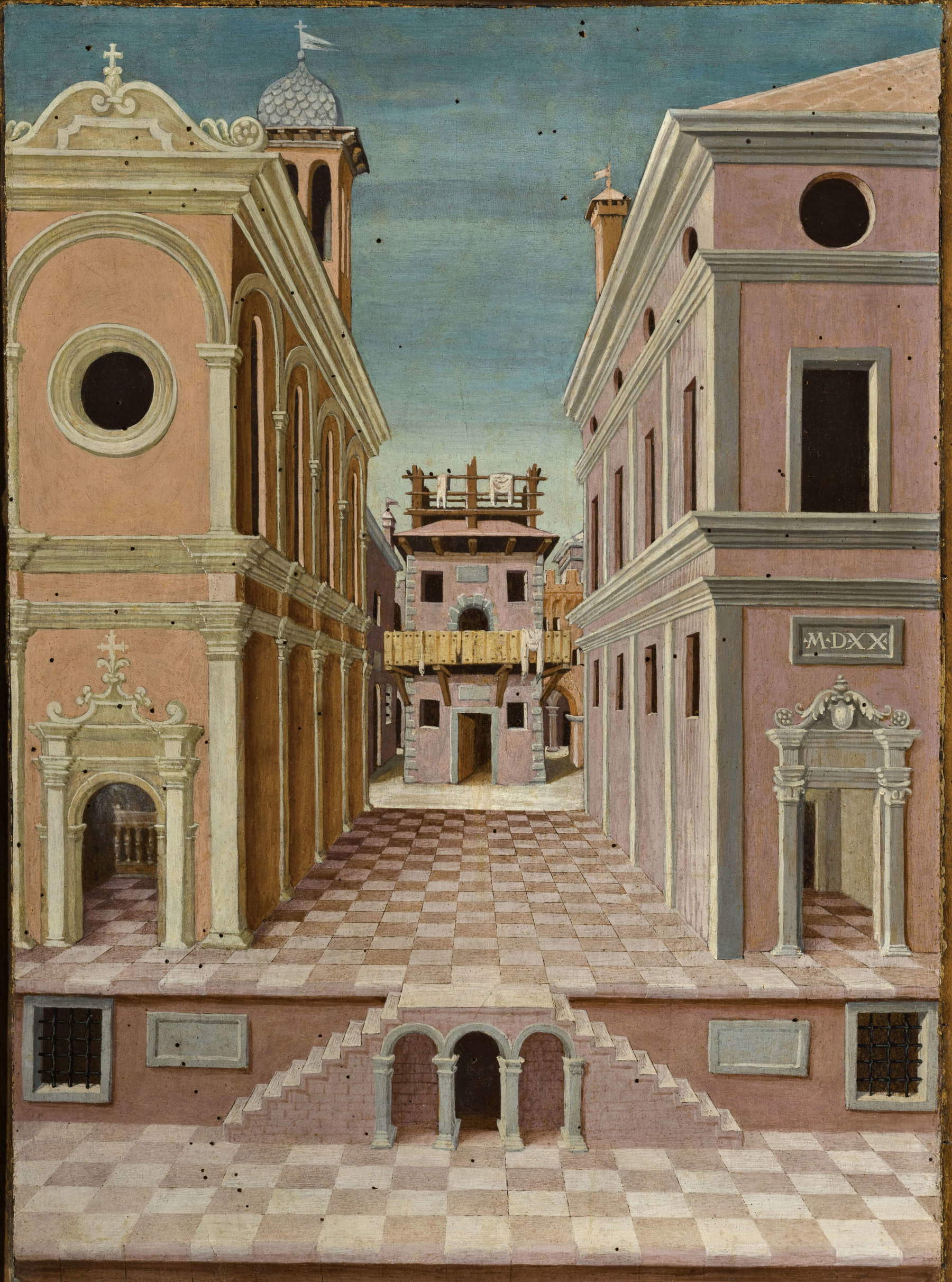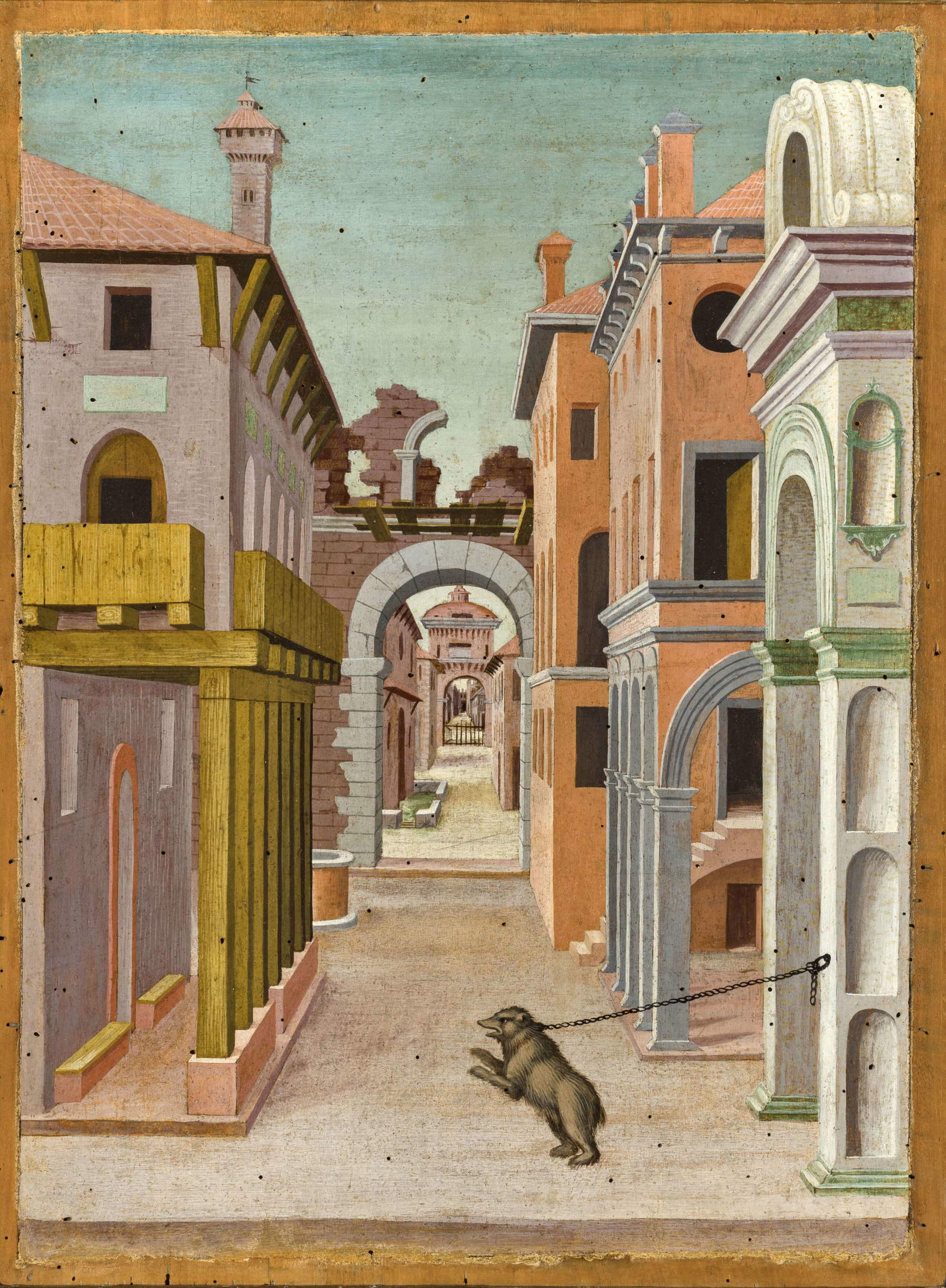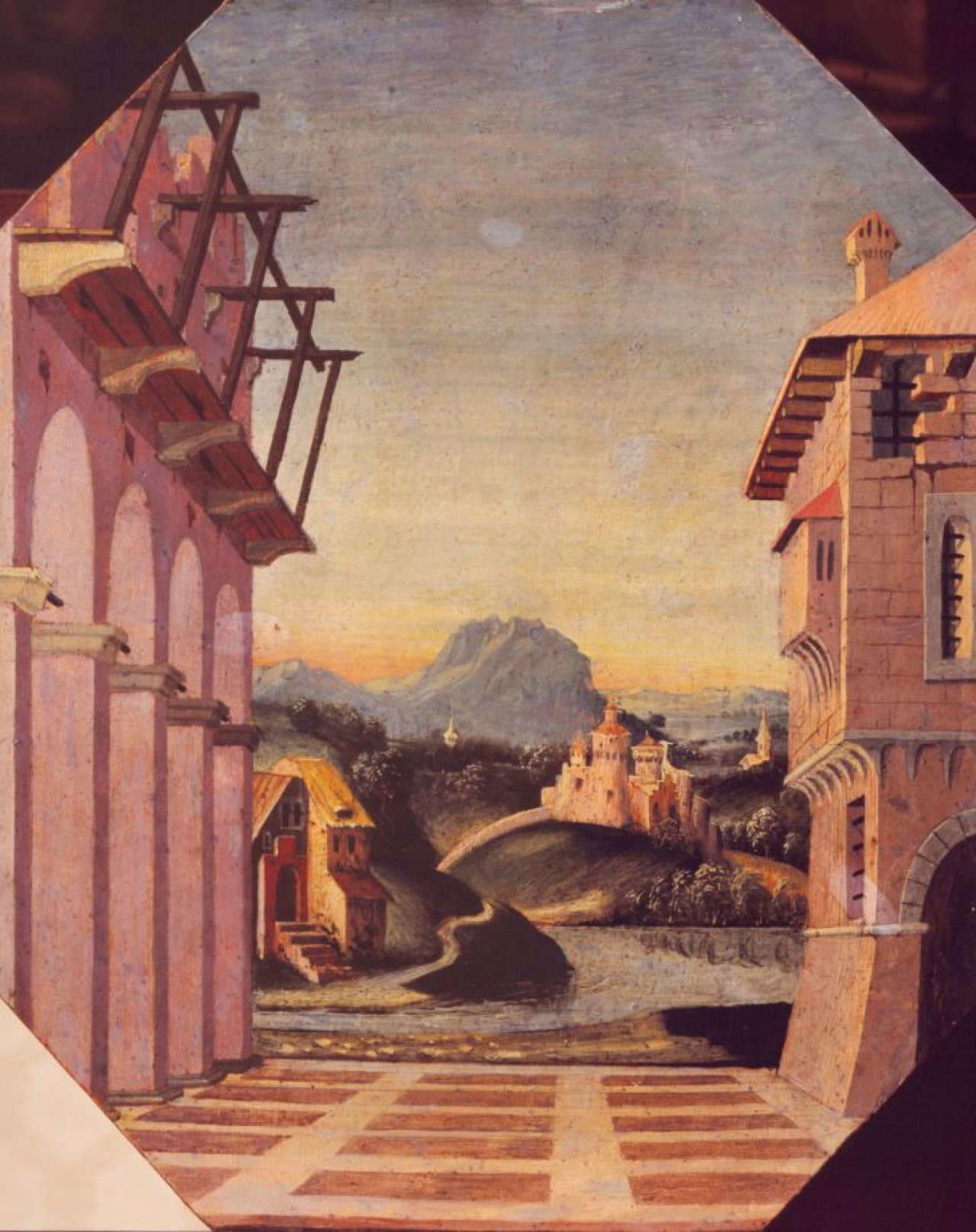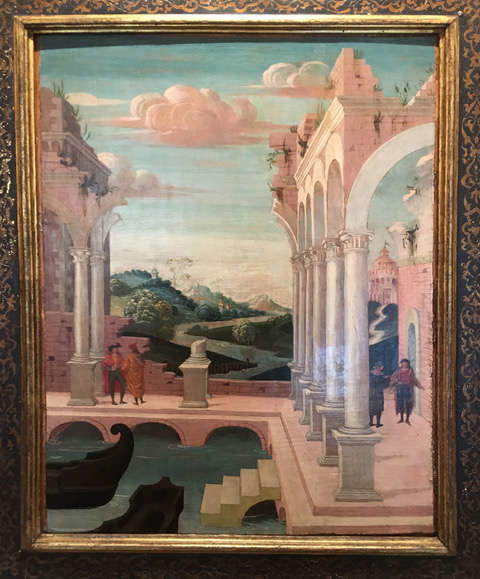Beyond the attributive proposals and the possible destination of the panels, the fierce chained bear in the Pinacoteca Nazionale di Ferrara remains an extremely eloquent and fascinating element, whose enigmatic nature sums up the mystery that still shrouds these extraordinary paintings.
Some scholars have attempted to understand their meaning, in the light of the overall interpretation of the images, although sometimes limiting themselves to the two panels already Strozzi Sacrati and therefore without taking into account the plurality of the decorative complex to which they belonged, along with the painting in the BPER Banca di Modena Collection and a fourth panel, discovered by Andrei Bliznukov in 2005 and currently in a private collection (Fondazione Longhi, Fototeca inv. 0560062; Ca’ Foscari University, Antonio Morassi Photo Library, unit 20, inv. 2259).
Götz Pochat, for example-who considers the paintings in the Pinacoteca di Ferrara to be the only painted stage elevations preserved from the Renaissance period-associates thebear to the medieval folk tradition of acrobats and the old German proverb “einen Bären aufbinden läßt,” or “to have a bear tied up,” meaning to incur debts. The saying, according to the scholar, derives its origin from two lines in an epigram by Martial(Ep. 6, 64, 27-28): “Sed miserere tui rabido nec perditus ore / Fumantem nasum vivi temptaveris ursi” (“Pity thee, nor with rabid style / Of the bear’s nose tease steaming”). Following the reasoning, the Italian proverb “non stuzzicare l’orso, quando gli fumare il naso” also derives from these verses of Martial, and is found, albeit with some syntactic differences, in the first act of Bernardo Dovizi da Bibbiena’s comedy La Calandria , which debuted on February 6, 1513, in Urbino’s Ducal Palace, introducing for the first time the perspective scenography with a view of the city.
This hypothesis therefore reaffirms the obvious relationship between the two Ferrara panels and the theatrical setting, as already unanimously noted by critics. Raffaella Zama has also noted that Serlio, in the Second Book of Perspective, advises for the tragic scene not to depict characters in motion-“because they have no motion et purely represent the living”-and to prefer rather “some person sleeping on good purpose, or true some dog, or other animal sleeping,” such as the chained bear, although it is not properly resting. For that matter, even in the inlay with the Baptism of Saint Dominic on the backboard of the Chapel of the Ark in the Church of San Domenico in Bologna, made by Friar Damiano Zambelli, between 1530 and 1535, perhaps based on a design by Serlio himself, the bear is flanked by a group of street performers, or rather madrigalists, according to Father Venturino Alce.




If, therefore, the bear so far contributes to situating the paintings in the figurative culture of the spectacle, which in turn reinvents on a perspective basis the image of the city, altering the perception of real space, it is now necessary to evaluate other possible meanings, that is, to plumb the semantic stratification of this animal, as much revered and feared in Antiquity as it was demonized and subjugated by the Church, particularly starting with Augustine. Indeed, a heuristic procedure can lead us to understand the equivocal truth of the detail, pending new data to clarify the history of the plates. To rediscover the bear tradition in the European imagination we will refer to a study by Michel Pastoureau, The Bear. History of a Fallen King, published in Italy first by Einaudi (2008) and recently by Mondadori (2023).
Beginning in the fifth century, what was considered the king of the forest, progenitor of illustrious dynasties, was gradually dethroned and humiliated because of its resemblance to man. If confusing the two natures was an abomination, a scandal, the Church fathers, interpreting some passages from the Old Testament and Pliny’s Natural History , saw in the bear a transgression of the divine order, so much so that they established that ursus est diabolus. During the Middle Ages it was therefore taken as a symbol of as many as five of the seven deadly sins: lust, anger, gluttony, envy and sloth. At the same time, and particularly from the 11th century, images of the bear in chains and muzzled, as it could be seen at fairs and in city squares, led by jesters and forced to perform in games and acrobatics, proliferated.
Debased and condemned, this large mammal in Christian iconography is extremely connoted and connoting. Even Jacopo Bellini exploits the ambivalence of the chained bear in his drawings to insist on the metaphorical value of the biblical episodes depicted (Paris, Musée du Louvre, Département des Arts graphiques, RF 1476, 4; RF 1484, 13; RF 1489, 21; RF 1554, 109). On the other hand, the proverb “menar l’orso a Modena” was and still is in use in Emilia, referring to the tribute of a live bear offered to the Este family by the inhabitants of Garfagnana to take advantage of the forested areas, starting in 1451. Considering the provenance of the plates, it is possible that the bear evoked this custom to those who observed it, as well as referring to the practice of the bear-trainers and implying the most sophisticated exegetical meanings.
In the present state of research, all the declinations that the detail can return to us have been screened here, aware that we have not exhausted its semiotic potential, nor do we favor any particular interpretation. Who knows if the reference to the Cesarini family, in whose coat of arms there is a chained bear, is not another viable avenue, considering precisely the contacts between Peruzzi and Serlio, as well as indirectly with Girolamo Marchesi, since the latter collaborated on more than one occasion. Only a careful documentary investigation will be able to shed light on the artist and the patron, allowing us to grasp the original meaning of the bear chained to the palace, without precluding the validity of the symbolic sedimentation of this animal in European culture.
Warning: the translation into English of the original Italian article was created using automatic tools. We undertake to review all articles, but we do not guarantee the total absence of inaccuracies in the translation due to the program. You can find the original by clicking on the ITA button. If you find any mistake,please contact us.